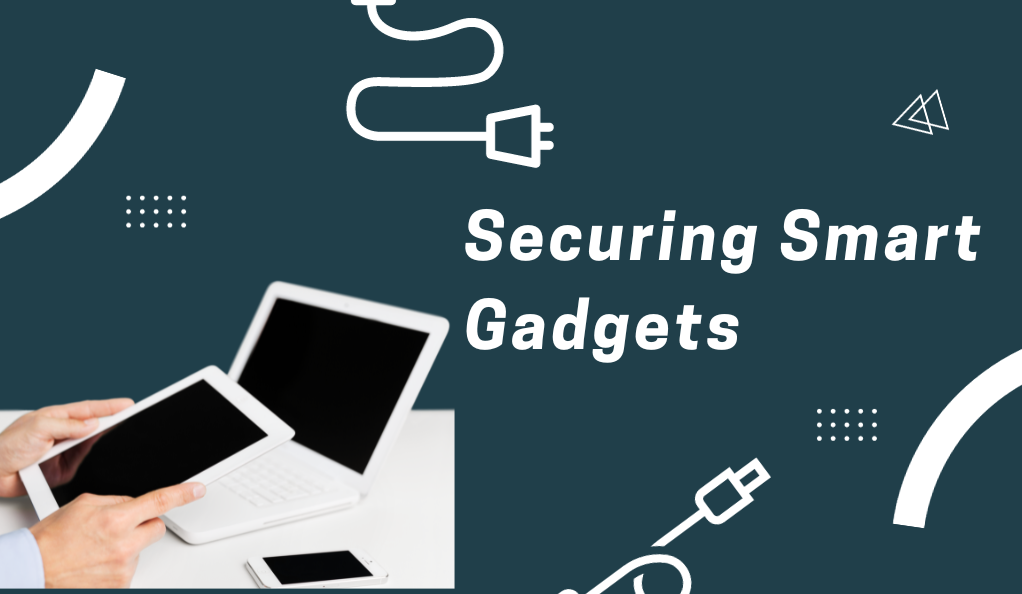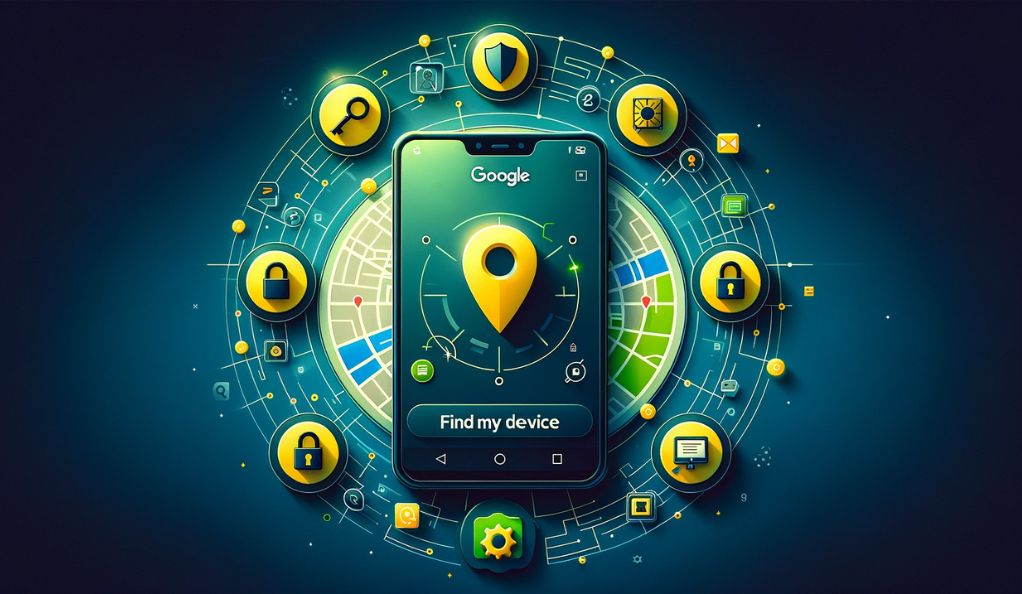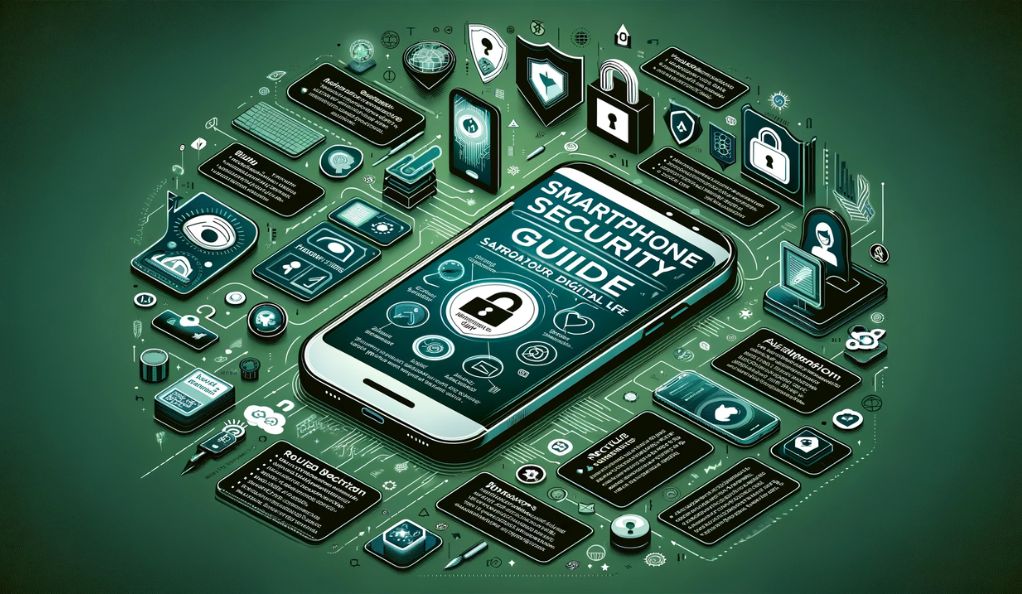In today’s digital age, the Internet of Things (IoT) has revolutionized the way we interact with everyday objects. From smart refrigerators that notify you when you’re out of milk to wearable devices that monitor your heart rate, the IoT ecosystem is vast and ever-growing. But with this technological advancement comes the pressing need for robust security measures. Let’s delve into the world of IoT security.
What is IoT Security?
IoT security, often referred to as “internet of things security,” is a specialized segment of the tech industry dedicated to safeguarding connected devices and the networks they operate within. At its core, IoT involves adding internet connectivity to a myriad of devices, be it digital machines, household objects, or even animals and humans. Each “thing” in this interconnected web has a unique identifier, enabling it to automatically transfer data over a network.
Imagine a world where your car communicates with your home’s heating system to ensure your living room is warm by the time you arrive, or where your fridge orders groceries when it detects you’re running low on essentials. This is the promise of IoT. However, the very feature that makes IoT devices convenient—their connectivity—also makes them vulnerable. When a device can communicate with the internet or other devices, it opens up potential gateways for cyber threats if not adequately protected.
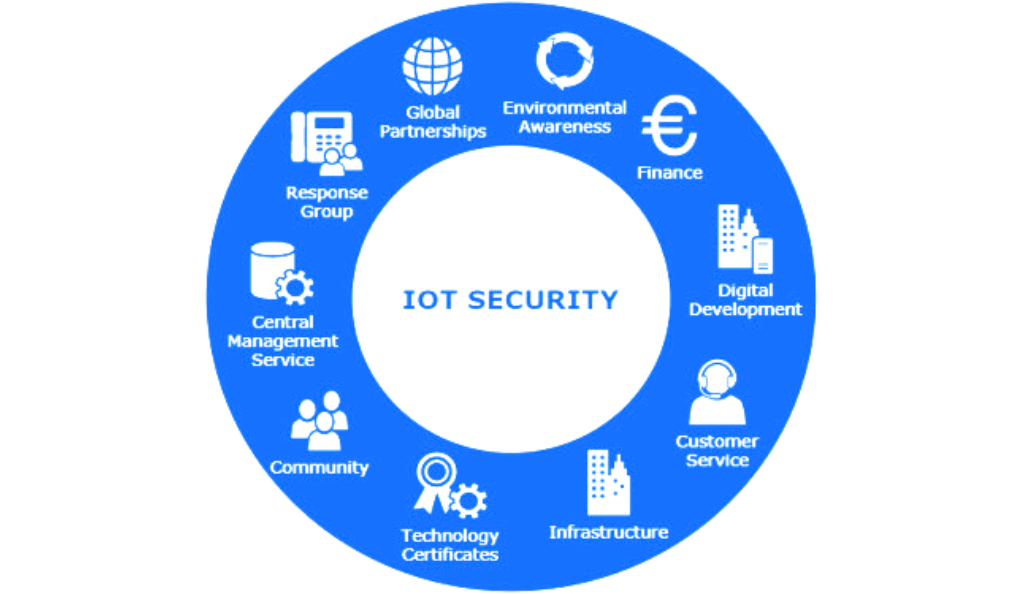
The Broad Spectrum of IoT Devices
The term “IoT” is vast and continues to expand as technology evolves. It’s not just about smart thermostats or wearable fitness trackers. Today, even video game consoles, watches, and some advanced toys have IoT capabilities. They can interact with the internet or other devices, collecting and sharing data in real-time.
| Device Type | Examples | Functionality |
|---|---|---|
| Wearables | Smartwatches, Fitness Trackers | Monitor health metrics, notifications |
| Home Appliances | Smart Refrigerators, Thermostats | Automate household tasks, energy efficiency |
| Entertainment | Smart TVs, Game Consoles | Streaming, online gaming |
| Healthcare | Heart Monitors, Insulin Pumps | Real-time health monitoring, alerts |
As the table illustrates, the range of IoT devices is diverse, spanning multiple industries and serving various purposes. But regardless of their function, all these devices share a common need: robust security measures to protect user data and ensure smooth, uninterrupted operation.
The Importance of IoT Security
As we increasingly intertwine our daily lives with smart devices, the significance of IoT security becomes more pronounced. But why is it so crucial? Let’s explore.
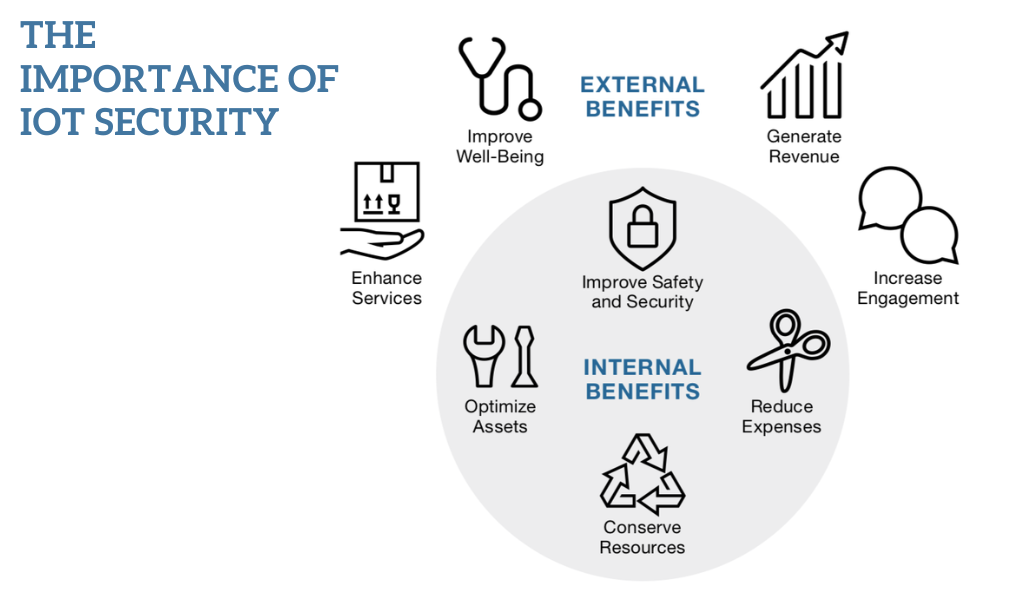
The Double-Edged Sword of Connectivity
The primary allure of IoT devices is their ability to connect, communicate, and automate. However, this connectivity is a double-edged sword. On one hand, it offers unparalleled convenience and efficiency. On the other, it presents a myriad of vulnerabilities. Each connection point is a potential entry for cyber threats.
For instance, a smart thermostat can learn your daily routine, ensuring your home is warm when you arrive and conserving energy when you’re away. But if this device is compromised, malicious actors could not only alter your home’s temperature but might also gain access to your daily routine, knowing when you’re away from home.
High-Profile Incidents: A Wake-Up Call
Over the past few years, several high-profile incidents have underscored the urgent need for robust IoT security. From hackers taking control of cars remotely to infiltrations via seemingly innocuous devices like baby monitors, these incidents have shown that no device is too small or insignificant to be a target.
One notable incident involved a major casino. The attackers gained entry not through the casino’s main systems, but through a smart thermometer in a fish tank. Once inside the network, they extracted a vast amount of data, leading to significant financial and reputational losses.
Such incidents serve as a stark reminder: the unconventional manufacturing and vast data handling capabilities of IoT devices make them attractive targets. They can be used as entry points to larger networks, leading to data breaches, financial losses, and even potential physical harm.
Protecting More Than Just Devices
When we talk about IoT security, we’re not just protecting the devices themselves. We’re safeguarding the data they hold and transmit. This data can range from personal preferences, like your preferred room temperature, to sensitive information such as health metrics, financial details, and more.
Moreover, in an interconnected ecosystem, the compromise of one device can lead to a domino effect, jeopardizing the entire network. For businesses, this could mean operational disruptions, loss of customer trust, and hefty financial implications.
Challenges in IoT Security
The rapid proliferation of IoT devices has brought with it a unique set of challenges. As we integrate these devices into our daily lives and business operations, understanding these challenges is the first step towards effective mitigation.
Remote Exposure and the Risks of Internet-Supported Connectivity
IoT devices are designed to be remotely accessible, allowing users to control and monitor them from anywhere. However, this remote accessibility can also be exploited by cybercriminals. Devices that are not properly secured can be easily accessed and controlled by unauthorized individuals, leading to data breaches, unauthorized surveillance, and even physical harm in some cases.
Industry’s Lack of Foresight in Securing IoT Devices
Many IoT devices are manufactured with a primary focus on functionality and cost-effectiveness, often sidelining security considerations. This lack of foresight has resulted in devices with weak or non-existent security measures, making them easy targets for cyberattacks.
Resource Constraints in IoT Devices
IoT devices, especially smaller ones like sensors and wearable tech, often have limited processing power and memory. This makes it challenging to implement robust security measures, such as encryption, without affecting the device’s performance.
The Danger of Weak Default Passwords
A significant number of IoT devices come with default passwords that are either too simple or widely known. Users often neglect to change these passwords, leaving their devices vulnerable. Attackers can easily find lists of default passwords online and use them to gain unauthorized access.
Risks Associated with Multiple Connected Devices
The interconnected nature of IoT means that a vulnerability in one device can potentially compromise an entire network. For instance, if a smart light bulb is hacked, it could serve as a gateway to more critical devices, like security systems or personal computers.
The Absence of Encryption in Many IoT Devices
Data encryption is a fundamental security measure, ensuring that even if data is intercepted, it remains unreadable. However, many IoT devices do not encrypt the data they transmit, leaving it exposed to potential eavesdroppers.
Steps to Mitigate IoT Security Challenges
Addressing the vulnerabilities of IoT devices requires a multi-faceted approach. By understanding the challenges, we can implement strategies that not only counteract current threats but also anticipate future ones. Here are some actionable steps to enhance IoT security:
1. Security During the Design Phase
It’s crucial to integrate security measures right from the design and development phase of an IoT device. Manufacturers should prioritize building devices with security in mind, rather than treating it as an afterthought. This includes secure coding practices, regular vulnerability assessments, and penetration testing.
2. Role of PKI and Digital Certificates
Public Key Infrastructure (PKI) and digital certificates play a pivotal role in IoT security. They ensure the authentication of devices, encrypt data transmissions, and maintain the integrity of messages. By implementing PKI, devices can establish trust within a network, ensuring that only authorized devices can communicate with each other.
3. Ensuring Network Security
The network supporting IoT devices should be as secure as the devices themselves. This involves setting up firewalls, intrusion detection systems, and regular network monitoring. Any anomalies or suspicious activities should trigger alerts for immediate action.
4. The Significance of API Security
Application Programming Interfaces (APIs) are the bridges that allow IoT devices to communicate. Ensuring the security of these APIs is paramount. This includes regular audits, employing rate limiting, and ensuring proper authentication and authorization mechanisms.
Additional IoT Security Methods
While we’ve explored several strategies to enhance IoT security, the rapidly evolving nature of technology and cyber threats necessitates a broader toolkit. Here are some additional methods to further bolster the security of IoT devices:
- Network Access Control: Network Access Control (NAC) ensures that only authenticated and compliant devices can connect to the network. By setting strict access policies, NAC systems can prevent unauthorized devices from joining the network, thereby reducing potential entry points for cyberattacks.
- Segmentation of IoT Devices: Instead of having all devices on a single network, segmenting them based on their functions or departments can limit the potential damage of a breach. If one segment is compromised, the threat is contained within that segment and doesn’t spread to the entire network.
- Security Gateways: Security gateways act as intermediaries between IoT devices and the network. They monitor and filter the data traffic, ensuring that only legitimate and secure communications occur. This adds an additional layer of protection against potential threats.
- Physical Security: While much of the focus on IoT security is on the digital realm, physical security is equally important. Devices should be safeguarded against theft, tampering, or unauthorized access. This includes securing device locations and using tamper-evident seals.
- Regular Security Audits: Conducting regular security audits can help identify potential vulnerabilities before they’re exploited. These audits should be comprehensive, covering both the hardware and software aspects of IoT devices.
- Incident Response Plan: Despite the best security measures, breaches can still occur. Having a well-defined incident response plan ensures that when a security incident happens, there’s a clear protocol to follow. This can help mitigate damage, recover from the incident, and prevent future occurrences.
- Collaboration with Security Communities: Manufacturers and users should actively collaborate with security communities. Open forums, security conferences, and online communities can be valuable sources of information on the latest threats and best practices in IoT security.
Vulnerable Industries and Devices
As IoT continues to permeate various sectors, it’s essential to recognize that some industries and devices are more susceptible to threats than others. Understanding these vulnerabilities can help stakeholders take proactive measures to safeguard their assets.
1. Healthcare
The healthcare industry has seen a surge in IoT adoption, with devices ranging from wearable health monitors to smart hospital equipment. While these innovations offer immense benefits, they also present significant risks. A compromised medical device could lead to incorrect diagnoses, medication errors, or even direct harm to patients.
2. Smart Homes
From smart thermostats to connected security cameras, our homes are becoming increasingly intelligent. However, each connected device presents a potential entry point for cybercriminals. A hacked smart home system could lead to privacy invasions, theft, or other malicious activities.
3. Automotive Industry
Modern vehicles are equipped with a plethora of IoT devices, enhancing safety, efficiency, and user experience. But, these connected systems can be exploited. There have been instances of hackers remotely controlling vehicles, posing significant safety risks.
4. Manufacturing
Industrial IoT (IIoT) has transformed manufacturing processes. While these connected systems optimize operations, they can also be vulnerable. A breach in a manufacturing unit could lead to production halts, compromised product quality, or even industrial accidents.
5. Retail
IoT in retail, from smart inventory systems to connected checkout counters, has revolutionized the shopping experience. However, these systems, if compromised, could lead to significant financial losses or breaches of customer data.
Specific IoT Devices Known for Vulnerabilities
While the above industries have their unique challenges, certain devices, in general, have been identified as particularly vulnerable:
- Security Cameras: Often, these devices come with default passwords that users neglect to change, making them easy targets.
- Smart Routers: These are primary gateways to home networks, and if not secured, can give attackers access to all connected devices.
- Wearable Tech: Devices like fitness trackers may seem harmless, but they hold a wealth of personal data that can be exploited.
- Smart Appliances: Devices like connected refrigerators or ovens can be hacked to cause physical damage or be used as entry points to broader networks.

Notable IoT Security Breaches
History has shown that even the most advanced systems can fall prey to cyberattacks. By examining notable IoT security breaches, we can better understand the risks and learn from past mistakes.
Mirai Botnet Attack (2016)
One of the most infamous IoT-related cyberattacks, the Mirai botnet, targeted vulnerable IoT devices like cameras and routers. By exploiting weak default passwords, the malware transformed these devices into a massive botnet, which then executed a Distributed Denial of Service (DDoS) attack on Dyn, a major DNS provider. This disruption affected major websites like Twitter, Netflix, and Reddit.
St. Jude Medical’s Cardiac Devices (2017)
Security researchers discovered vulnerabilities in St. Jude Medical’s implantable cardiac devices. These vulnerabilities could allow attackers to deplete the battery or administer incorrect pacing or shocks, posing severe risks to patients. This breach underscored the critical importance of security in medical IoT devices.
Jeep Cherokee Hack (2015)
In a demonstration of the vulnerabilities in smart vehicles, security researchers remotely took control of a Jeep Cherokee, manipulating its air conditioning, radio, and even disabling its transmission. This incident led to the recall of 1.4 million vehicles and highlighted the pressing need for robust automotive IoT security.
Target Data Breach (2013)
While not exclusively an IoT breach, the attack on Target’s point-of-sale systems offers valuable lessons. Hackers gained access through a connected HVAC vendor and managed to compromise the credit card information of over 40 million customers.
Baby Monitor Hacks
There have been multiple instances where baby monitors were hacked, allowing strangers to watch and even communicate with children. These incidents serve as chilling reminders of the potential personal violations that can arise from insecure IoT devices.
IoT Security Standards and Legislation
As the realm of IoT continues to expand, the need for standardized security measures and regulatory oversight becomes increasingly evident. Governments, industry bodies, and international organizations have recognized this need and are working collaboratively to establish guidelines and regulations to ensure a safer IoT ecosystem.
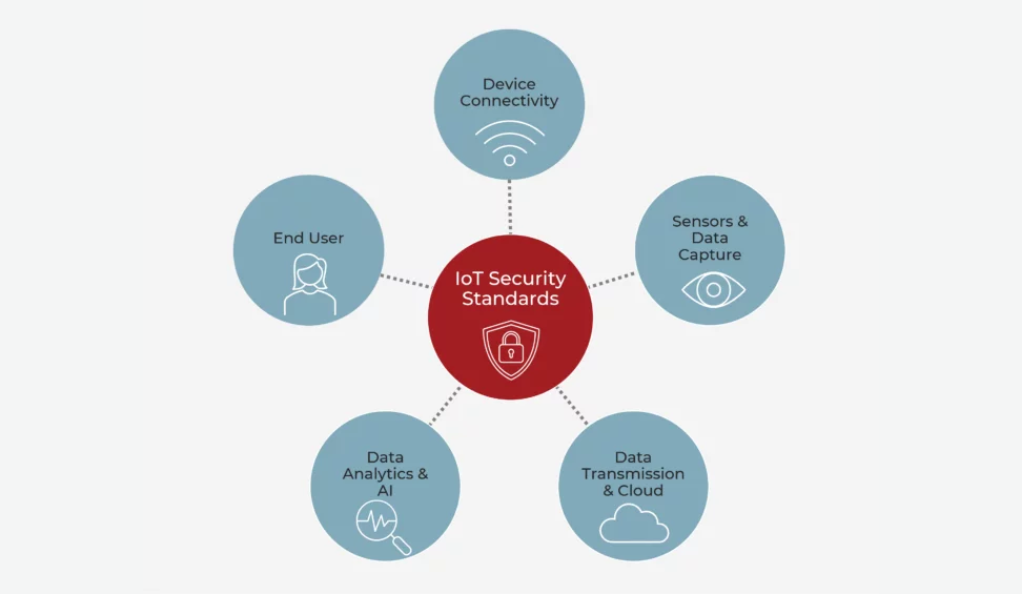
NIST’s Guidelines on IoT Security
The National Institute of Standards and Technology (NIST), a U.S. federal agency, has been at the forefront of establishing guidelines for IoT security. Their comprehensive documents cover various aspects, from device identity management to cybersecurity best practices, providing a solid foundation for IoT manufacturers and users.
IoT Cybersecurity Improvement Act
Passed in 2020, this U.S. legislation mandates that any IoT device purchased with federal money must meet specific security standards. This act not only sets a precedent for IoT device security but also encourages manufacturers to prioritize security in their designs.
European Union’s ENISA
The European Union Agency for Cybersecurity (ENISA) has been actively working on IoT security, providing guidelines, threat landscapes, and best practices. Their efforts aim to harmonize IoT security measures across the EU, ensuring a consistent and high level of protection.
GSMA IoT Security Guidelines
The GSMA, representing the interests of mobile operators worldwide, has developed a set of IoT security guidelines. These guidelines cover the entire IoT ecosystem, from devices to networks, and offer best practices to ensure robust security.
ISO/IEC Standards
The International Organization for Standardization (ISO) and the International Electrotechnical Commission (IEC) have jointly developed several standards related to IoT security. These standards provide a global framework for ensuring the safety and reliability of IoT devices and systems.
Conclusion
The Internet of Things (IoT) stands as a testament to human ingenuity, transforming the fabric of our daily lives and industries with interconnected devices that promise convenience, efficiency, and innovation. However, with this vast potential comes an equally significant responsibility: ensuring the security and safety of these devices and the data they handle. From understanding the intricacies of IoT vulnerabilities to implementing robust security measures, the journey towards a secure IoT ecosystem is collective, involving manufacturers, governments, industry bodies, and importantly, consumers. As we continue to weave a world where everything is connected, it’s imperative that we prioritize security at every step. Only then can we truly harness the transformative power of IoT, creating a future that’s not just smarter, but also safer for all.

